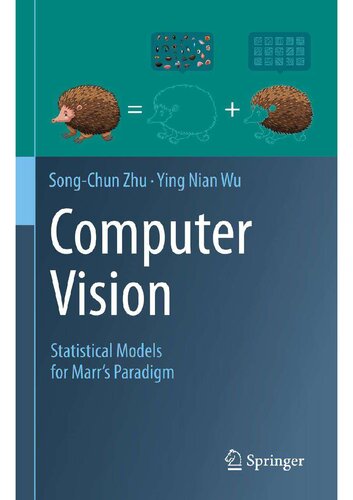

Most ebook files are in PDF format, so you can easily read them using various software such as Foxit Reader or directly on the Google Chrome browser.
Some ebook files are released by publishers in other formats such as .awz, .mobi, .epub, .fb2, etc. You may need to install specific software to read these formats on mobile/PC, such as Calibre.
Please read the tutorial at this link: https://ebookbell.com/faq
We offer FREE conversion to the popular formats you request; however, this may take some time. Therefore, right after payment, please email us, and we will try to provide the service as quickly as possible.
For some exceptional file formats or broken links (if any), please refrain from opening any disputes. Instead, email us first, and we will try to assist within a maximum of 6 hours.
EbookBell Team

4.1
10 reviewsAs the first book of a three-part series, this book is offered as a tribute to pioneers in vision, such as Bela Julesz, David Marr, King-Sun Fu, Ulf Grenander, and David Mumford. The authors hope to provide foundation and, perhaps more importantly, further inspiration for continued research in vision. This book covers David Marr's paradigm and various underlying statistical models for vision.
The mathematical framework herein integrates three regimes of models (low-, mid-, and high-entropy regimes) and provides foundation for research in visual coding, recognition, and cognition. Concepts are first explained for understanding and then supported by findings in psychology and neuroscience, after which they are established by statistical models and associated learning and inference algorithms.
A reader will gain a unified, cross-disciplinary view of research in vision and will accrue knowledge spanning from psychology to neuroscience to statistics.
The primary aim of this book is to pursue knowledge representation for vision. In a world in which technology generates immense amounts of data from a wide spectrum of sources, it is of growing importance to establish a common framework for knowledge representation, learning, and discovery.
A current problem in Artificial Intelligence is how to acquire truly massive amounts of knowledge, akin to the faculty of common sense in humans, from raw sensory signals and, moreover, use this knowledge for inference and reasoning. In this book, the vision models presented for acquiring such knowledge are based most fundamentally on statistical properties discovered for natural images over the past several decades. Similar to models in physics, models are advanced based on empirical grounds, such as discovering additional patterns in data. In this way, models stay free of bias.